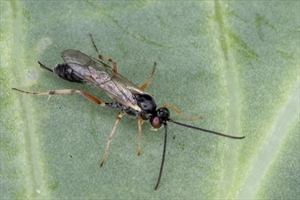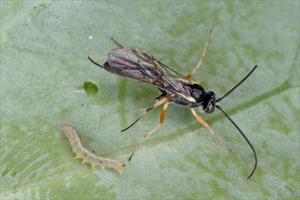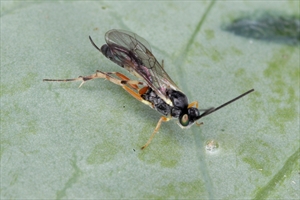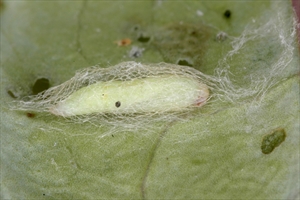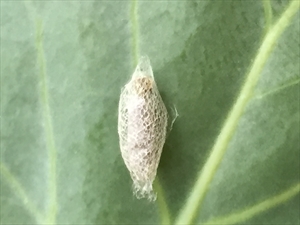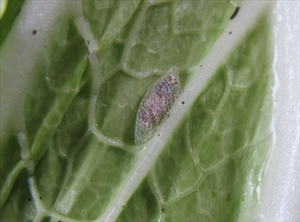- Worldwide distribution. Diadegma semiclausum is native to Europe, but introduced into many countries in Asia, Africa and Oceania. It is established in Australia and New Zealand but, not in other Pacific islands, with the exception of the highlands of Papua New Guinea.
- Common parasitising diamondback moth (DBM) caterpillars. Prefers young ones, laying one egg in each. Females lay many hundreds of eggs.
- Prefers cool temperature of 15-25°C. Look for small (6-7 mm) wasp searching on DBM-damaged leaves.
- The DBM caterpillar develops normally until it pupates, then Diadegma makes its own pupa. Look for oval pupa. 8-10 days later, adult hatches. Gives good control (if no broad-spectrum insecticides used): >90%. Do not use pyrethroids or organophosphates, as they will kill Diadegma and predators; use Bt (Bacillus thiringiensis).
